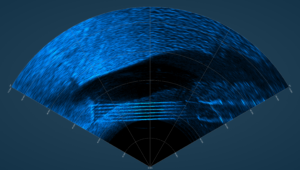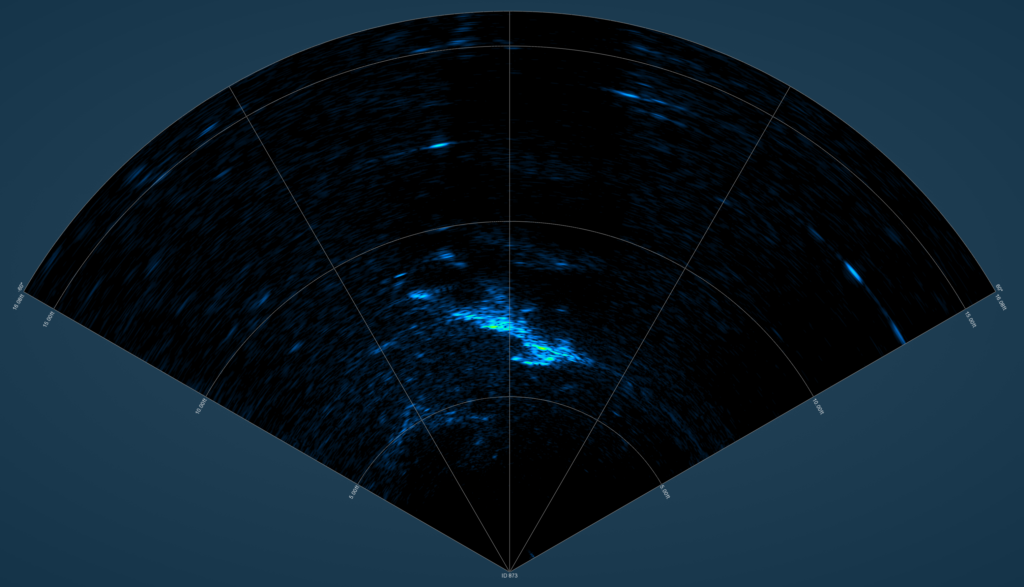Multibeam Sonar (MBS)
Multibeam sonars are forward-looking sonars that can be deployed via pole mount, tripods, or ROVs. A critical difference between multibeam sonars and both side scan and mechanically scanning sonars is their ability to generate sharp sonar images from either mobile or stationary platforms.
Unlike side scan sonar and mechanically scanning sonars that typically only transmit and receive one acoustic beam at a time. Multibeam sonars utilize a beamforming process that allows them to transmit and receive up to 1024 acoustic beams simultaneously over a 120-degree field of view. This generates a narrow horizontal beam between 0.5 – 1.6 degrees wide. They typically have vertical beamwidths of 20 degrees and feature update rates between 5 to 65 times per second.

This combination of narrow beamwidths and fast update rates is what produces their high-resolution real-time sonar images. Many individuals who use multibeam systems for the first time compare it to watching a video camera.
Multibeam sonars are useful in providing a clear image of the bottom and any submerged objects that may present entanglement hazards. The example to the right shows an excellent example of this. The sonar record clearly indicates a submerged span bridge with a significant verticle structure and multiple support structures.
When mounted on ROVs, they are an excellent tool for locating and identifying drowning victims. Their fast update rates and high resolution allow ROV operators to maneuver the ROV into close proximity of the drowning victim. Multibeam sonars are ideal for localized searches and in situations where mobility is desired. They can be used via pole mount to search larger areas of shallow water. However, due to their limited field of view, they are generally poorly suited for broad area searches. In these cases, a side scan sonar would be the system of choice.
You can find details on our multibeam sonar training programs on our Sonar Training page.


